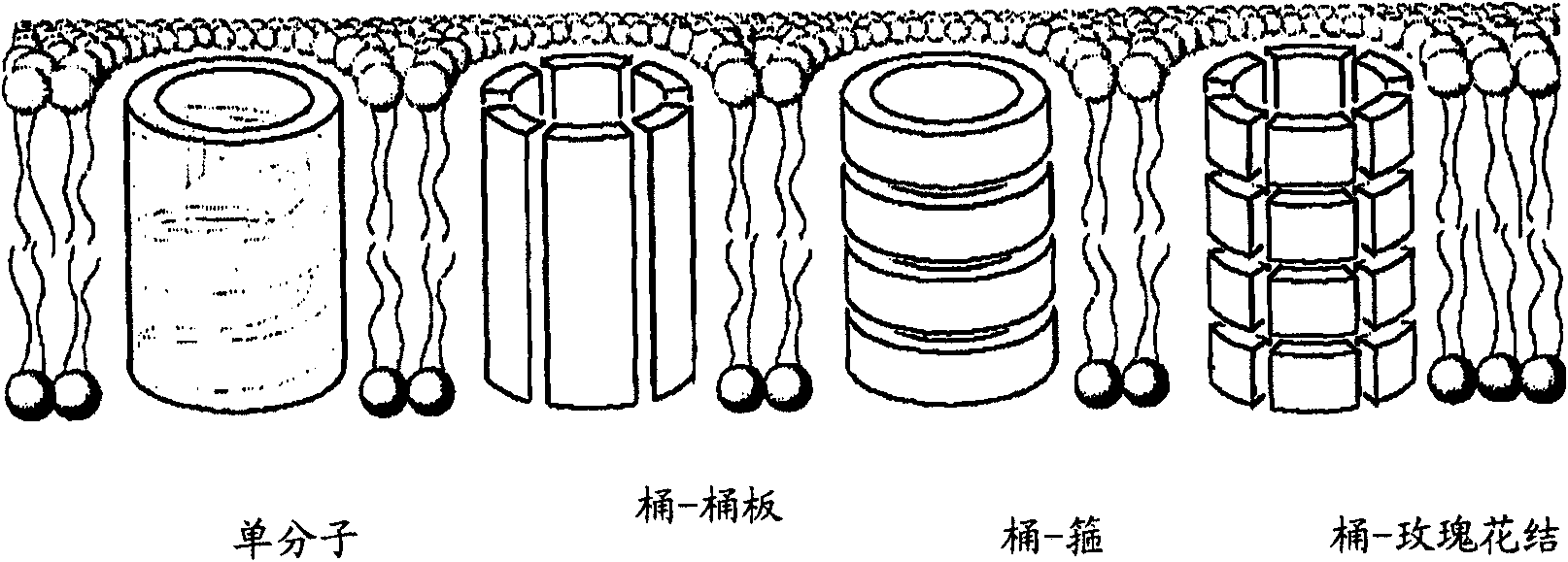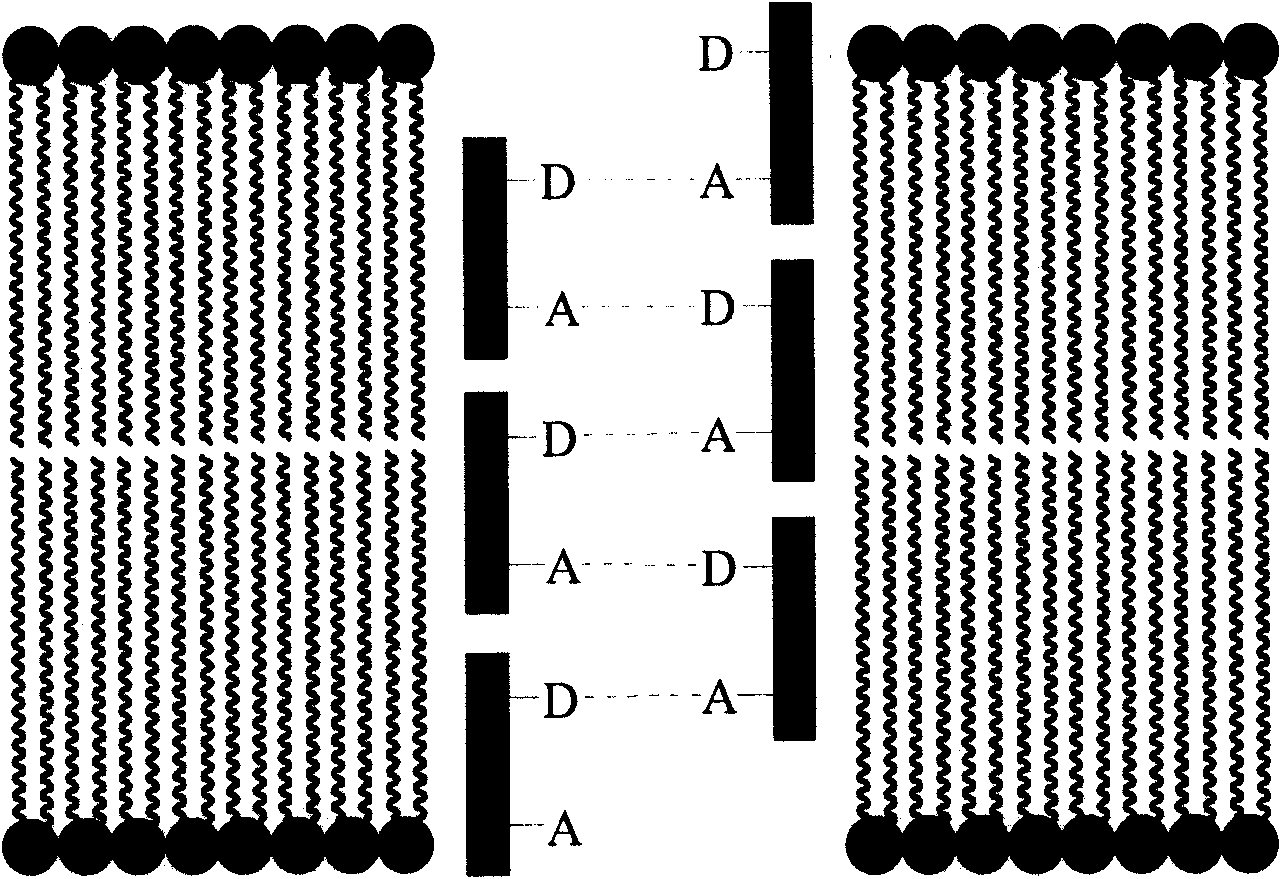Synthetic ion channels
An ion channel, molecular technology, applied in the prevention and/or management of diseases related to chloride channel dysfunction, preparation and use of the compound and composition, ion channel forming composition, synthetic anion channel forming, therapeutic field, Capable of solving problems such as complex structures and high molecular weights, limiting applications
- Summary
- Abstract
- Description
- Claims
- Application Information
AI Technical Summary
Problems solved by technology
Method used
Image
Examples
Embodiment 1
[0188] Preparation of Example 1
[0189]
[0190] Route A
[0191] Example 1 was prepared according to Scheme A above. Starting material D-2-phthalimidoxy-4-methylpentanoate (D-tert-butyl 2-phthalimidoxy-4-methylpentanoate, compound 1) was synthesized according to literature Yang et al., J . Org. Chem, 2001, 66, 7303-7312. Compound 1 is a white crystalline solid characterized by the following data: m.p.92-93°C; [α] 20 D +77.0° (c 1.01, CHCl 3 ); 1 H NMR (300MHz, CDCl 3 )δ7.85-7.81 (m, 2H), 7.78-7.74 (m, 2H), 4.74 (dd, J=8.5, 5.4Hz, 1H), 2.05-1.91 (m, 2H), 1.72-1.63 (m, 1H), 1.46(s, 9H), 1.07(d, J=6.3Hz, 3H), 1.00(d, J=6.3Hz, 3H); 13 C NMR (75MHz, CDCl 3 )δ169.13, 163.21, 134.50, 128.87, 123.53, 84.74, 83.39, 39.89, 27.82, 24.47, 22.90, 21.96; IR (CHCl 3 )3032, 1793, 1738cm -1 ; LRMS (EI, 70ev) m / z 333 (M + , 1), 278(6), 232(17), 164(15), 148(100); HRMS(EI), for C 18 h 23 NO 5 (M + ): Calculated 333.1576, Measured 333.1573.
[0192] To compound 1 (2.00g, 6.0...
Embodiment 2
[0194] Preparation of Example 2
[0195]
[0196] Route B
[0197] Example 2 was prepared according to Scheme B above. At room temperature, inject Example 1 (537mg, 1.0mmol) in CH with a syringe 2 Cl 2 (5 mL) was carefully added an equal volume of CF 3 COOH (5 mL). After stirring at room temperature for about 3 hours, the reaction mixture was concentrated in vacuo. The residue was azeotroped twice with toluene to give the free acid compound 3 as a white solid which was used directly for peptide coupling.
[0198] Add freshly distilled CH to the flask containing anhydrous compound 3 under nitrogen atmosphere 2 Cl 2 (50 mL), then HOAt (354 mg, 2.6 mmol), isobutylamine (0.21 mL, 2.1 mmol) and finally EDCI (891 mg, 3.0 mmol) were added. Stir overnight with CH 2 Cl 2 Dilute the reaction mixture. Organic layer with 5% NaHCO 3 and brine, dried over anhydrous magnesium sulfate, and concentrated. The crude oil was purified by flash column chromatography to afford 492 mg...
Embodiment 3
[0199] Preparation of Example 3
[0200]
[0201] Route C
[0202] The preparation of Example 3 was carried out according to Route C above, similar to Route B of Preparation Example 2, except that isobutylamine was replaced by decylamine. Example 3 was isolated as a colorless oil. Example 3 is characterized by the following data: [α] 20 D +34.5° (c 1.00, CHCl 3 ); 1 H NMR (400MHz, CDCl 3 )δ11.32(s, 2H), 8.28(br, 2H), 8.19(s, 1H), 8.05(d, J=7.5Hz, 2H), 7.52(t, J=7.5Hz, 1H), 4.38( br, 2H), 3.13-3.02(m, 4H), 1.82(m, 2H), 1.65-1.55(m, 4H), 1.42(br, 4H), 1.35-1.25(m, 28H), 0.89-0.85( m,18H); 13 C NMR (100MHz, CDCl 3 )δ172.30, 165.91, 132.05, 131.29, 129.37, 124.98, 85.31, 41.17, 39.47, 31.89, 29.55, 29.53, 29.30, 29.12, 26.91, 24.73, 23.18, 22.67, 21.79; IR, 14.Cl 3 )3446, 1662cm -1 ;LRMS(FAB)m / z704(M + , 1); HRMS(FAB), for C 40 h 71 N 4 o 6 (M + , 1): calculated value 703.5374, measured value 703.5354.
PUM
| Property | Measurement | Unit |
|---|---|---|
| diameter | aaaaa | aaaaa |
| diameter | aaaaa | aaaaa |
| density | aaaaa | aaaaa |
Abstract
Description
Claims
Application Information
 Login to View More
Login to View More - R&D
- Intellectual Property
- Life Sciences
- Materials
- Tech Scout
- Unparalleled Data Quality
- Higher Quality Content
- 60% Fewer Hallucinations
Browse by: Latest US Patents, China's latest patents, Technical Efficacy Thesaurus, Application Domain, Technology Topic, Popular Technical Reports.
© 2025 PatSnap. All rights reserved.Legal|Privacy policy|Modern Slavery Act Transparency Statement|Sitemap|About US| Contact US: help@patsnap.com



